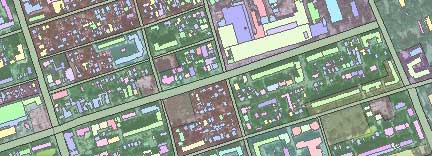Sat-Sun: Non-working days
Approximately 450 tons of various platinum ore metals are currently mined worldwide per year. Platinum makes up less than half of it. At the same time, the world production of gold per year is about 3 thousand tons, that is as much as fifteen times more than platinum.
How is this amazing metal mined and where can its largest deposits be found?
Methods of Extraction
How is platinum mined? The method of extraction often depends on the type of noble metal deposit. If platinum beds are shallow or even on the surface, an "open" method of extraction is used. However, if the horizon is deep, a "closed" method is applied.
The technological cycle of mining this noble metal usually begins with comprehensive geological exploration of the prospective deposit.
- The open method involves removing a small layer of soil from the platinum-bearing placer.
- The closed method consists of drilling, laying powerful explosives, and constructing sufficiently deep shafts.
Regardless of the method, modern technologies and a large amount of specialized mining equipment are used for platinum extraction today.
Natural Platinum Mining
The extraction of precious metals through various artisanal methods was inherent to people who sought great treasures or treasures. Residents of mountainous areas often independently search for rich ores and attempt to extract platinum elements using makeshift tools.
Speaking of such artisanal methods, one cannot forget about extracting platinum from stone using iodine. What does this method entail? The procedure is as follows:
- First, select stones with visible white spots and veins.
- Take regular iodine in a pipette.
- The reaction of iodine with platinum or gold always produces a bright green color of this substance.
- If after drying iodine on a stone surface there remains a greenish tint, then there is precious metal present.
In addition to this, platinum is extracted from various metal-bearing ores. For example, from nickel or sulfide copper-nickel ores. However, it is important to note that a portion of the platinum is lost during their processing along with production waste by enriching nickel or copper. Due to this, today such a method is not generally used. Instead, other methods of extraction are employed.
Artificial Intelligence and Platinum Deposit Exploration
Even artificial intelligence has begun to be used for platinum deposit exploration recently. It all started in 2015 when the organization "Integra Gold" announced the start of a special competition with a prize fund of $1 million USD. Participants were given access to nearly 26 GB of geological exploration data, which they had to analyze to discover a new large platinum deposit in the Canadian mining area.
The company "SGS Geostat" won $500,000 USD and first place by thoroughly and comprehensively analyzing all the original data to prepare a full 30-page report.
Experts at the company extrapolated and interpolated historical information, creating a special block model based on it, and then used their own software "Genesis" (a prototype of artificial intelligence) which they integrated with the popular virtual reality device "Oculus Rift". This allowed them to plan a detailed scheme of drilling wells and accurately calculate the orientation and angle of objects suitable for further study.
According to specialists at "SGS Geostat", artificial intelligence in the search for gold deposits is a completely new area for them, but it is very objective and capable of identifying various correlations between data that an ordinary person cannot find.
Platinum Deposits in Russia
Today, Russia ranks second after South Africa in the number of deposits where platinum is mined in significant quantities. Development of various platinum-bearing ores occurs in the Khabarovsk Krai as well as on large deposits in the Urals and on the Kola Peninsula.
Deposits in the Urals
From 1824 to 1922, approximately 250 tons of noble metal were extracted in the Urals. It is here that unique nuggets were found, including the nearly 8-kilogram "Ural Giant," which is kept in the Russian Diamond Fund, making these deposits truly unique.
In the early 20th century, the Nizhnetagilsk and Is Rivers deposits accounted for about 80% of the total global platinum production. However, by the mid-20th century, most deposits in the Urals were depleted, and mining was reduced to a minimum. Today, residual alluvial deposits are mainly being developed there.
Deposits on the Kola Peninsula
A significant gold and platinum deposit was recently discovered on the Kola Peninsula near Monchegorsk. Research into the platinum content began in 2018, and if the results confirm the presence of deposits, this site will be one of the richest in Russia.
According to scientists, the 3 km area contains several platinum layers, making it a promising site for development.
Platinum Deposits in Other Countries
Africa
The largest platinum deposit on the planet is located in South Africa—the Bushveld Complex. This deposit has been around for about 2 billion years and produces approximately one-third of the world's platinum each year. The complex includes three major layers: Merensky, Platreef, and UG2, ensuring its long-term sustainability and production.
Zimbabwe is also a significant producer of platinum, mining about 11 tons annually.
China
China began developing platinum deposits in the early 2000s. However, the platinum content in the ore is significantly lower compared to South Africa and Zimbabwe.
Mongolia
Mongolia is a small country rich in natural resources, including gold, coal, metallic ores, and alluvial platinum. Discussions are currently underway with leading companies for the development of platinum deposits.
USA
Platinum mining in the USA is limited to two large mines in Montana: "East Boulder" and "Stillwater." The ore from these deposits contains significant amounts of platinum and palladium.
Canada
Canada also mines platinum at deposits in Ontario, producing up to 5 tons annually.
Platinum can be found in almost any part of the world, and each of these countries plays a role in the global market for the mining and production of this valuable metal.






